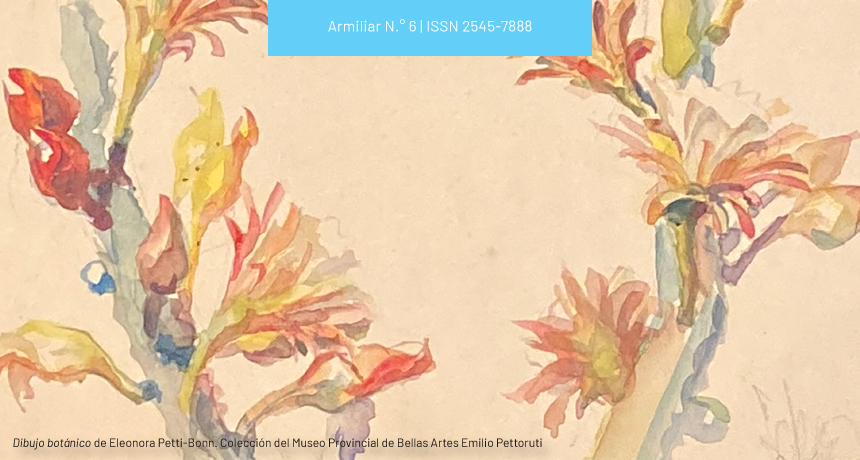Elizabeth Blackwell
Botanical illustration and art history
DOI:
https://doi.org/10.24215/25457888e044Keywords:
Herbarium, illustration, producer, art historiography, marginalitiesAbstract
The work of women in the world of arts and sciences has been a subject little addressed by research in these fields. It was only in the 20th century that reflection on the role of women artists from a gender perspective and feminist theory appeared. However, within this discipline, scientific-botanical illustrations, understood as art, remain in the limbo of minor or applied arts. In this sense, there is a double marginality. Thus, both women as artists and producers and those genres and styles within art such as scientific illustration and, especially, botanical illustration of herbariums are relegated in terms research and recognition. historical. The purpose of this work is to propose the history of Elizabeth Blackwell, and her central work within scientific and artistic studies of the 18th century, as a paradigm to think about these problems.Downloads
References
Bleichmar, D. (2016). El Imperio visible. Expediciones botánicas y cultura visual en la Ilustración hispánica. Fondo de cultura económica.
Blackwell, E. (1737). A curious herbal: Containing five hundred cuts, of the most useful plants, which are now used in the practice of physick: engraved on folio copper plates, after drawings taken from life. [Un herbario curioso: Contiene quinientos cortes, de las plantas más útiles, que ahora se utilizan en la práctica de física: grabado en placas de cobre de folio, en base a dibujos tomados de la vida.] Printed for Samuel Harding. https://collections.nlm.nih.gov/catalog/nlm:nlmuid-2449056Rmvset
Nochlin, L. [1988] (2007). ¿Por qué no han existido grandes artistas mujeres? En C. Reiman e I. Saenz. (Comps.) Crítica feminista en la teoría y la historia del arte (pp.17-43). Universidad Iberoamericana.
Pollock, G. (2013). Visión y diferencia. Feminismo, feminidad e historias del arte. Fiordo. Armilia
Downloads
Published
How to Cite
Issue
Section
License
Copyright (c) 2022 Florencia Avellaneda Larumbe

This work is licensed under a Creative Commons Attribution-NonCommercial-ShareAlike 4.0 International License.
Current policy since 2019
The acceptance of the manuscript by the magazine means the non-exclusive cession of the property rights of the authors in favour of the editor, who allows the reuse, after publication (post print), under a license Attribution-NonCommercial-ShareAlikes 4.0 International (BY-NC-SA 4.0).
According to these terms, the material can be copied and redistributed by any means or in any format as long as a) the author and original source of the publication are quoted (magazine and URL of the work), access to the license is provided and whether changes have been made is mentioned; and b) the material is not used for commercial purposes.
The cession of non-exclusive rights means that after the publication (post print) in Armiliar the authors can publish their work in any language, means and format; in such cases it must be mentioned that the material was originally published in this magazine. Such cession also means the authorization of the authors for the work to be collected by SEDICI, the institutional archive of the Universidad Nacional de La Plata, and to be spread in the databases that the editorial team considers appropriate to increase the visibility of the publication and its authors.
Moreover, the magazine encourages the authors to deposit their productions in other institutional and thematic archives under the principle that offering the society the scientific and academic production without any restrictions contributes to a greater exchange of the global knowledge.



























